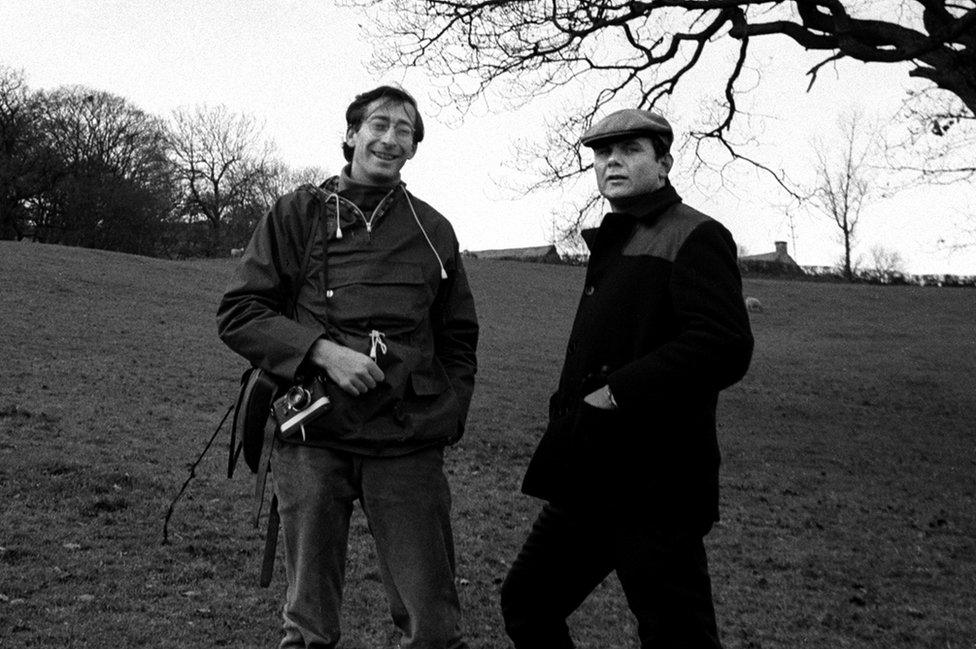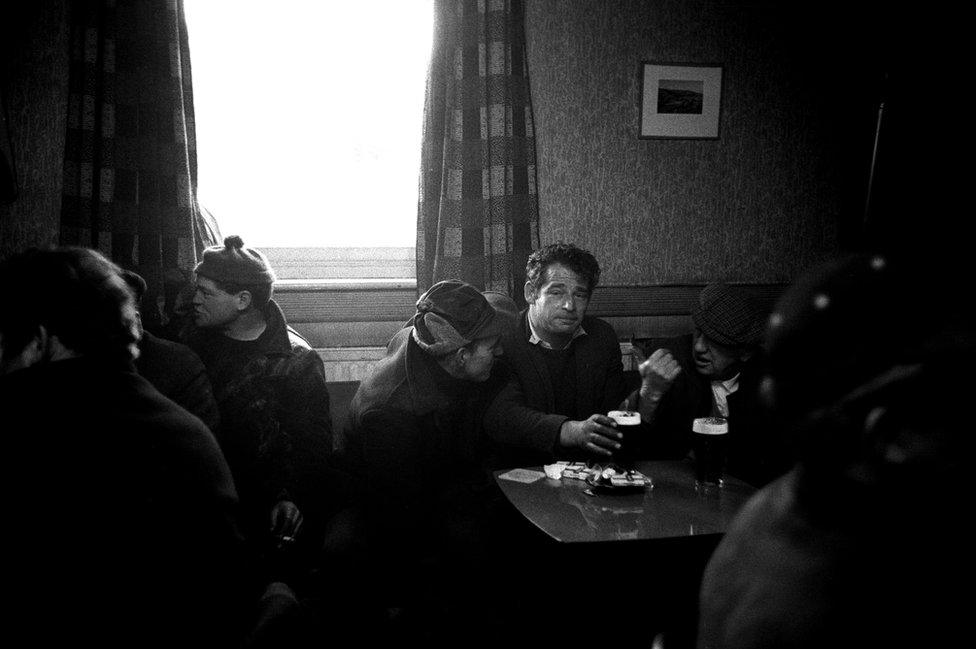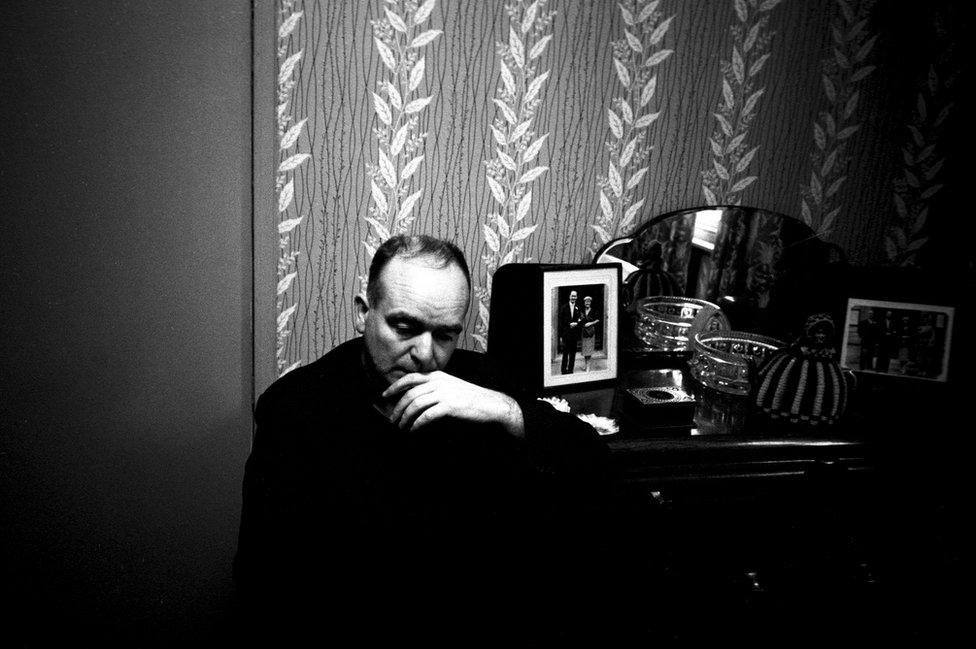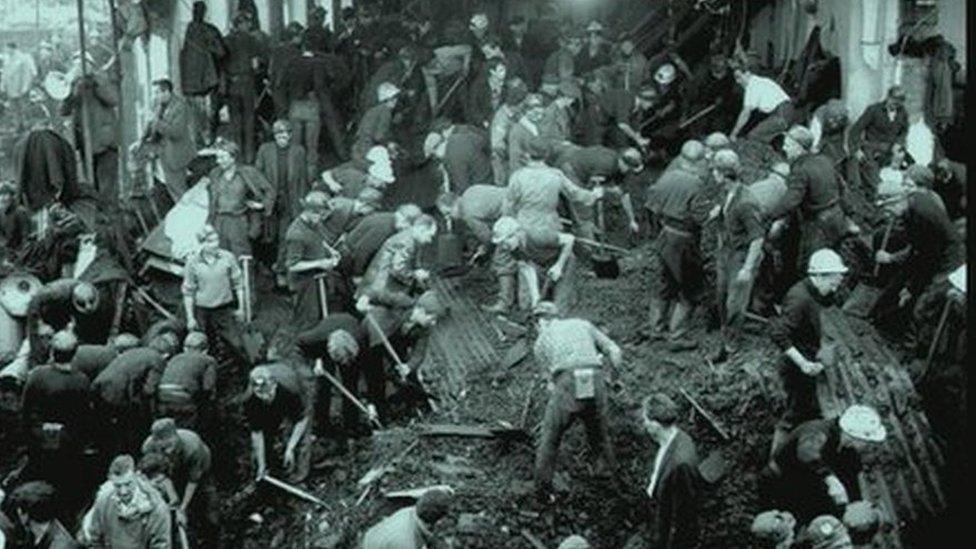Chuck Rapoport exhibits Aberfan disaster photographs
- Published

Chuck Rapoport is pictured with Jim Hicks, Life magazine's London bureau chief
After watching the tragedy of the Aberfan disaster unfold on television, photojournalist Chuck Rapoport left his home in New York to capture the aftermath.
But to the grief-struck villagers he was "just another man with a camera".
Little did they know he would change their lives and become a lifelong friend.
Mr Rapoport's pictures feature in an exhibition which coincides with the 50th anniversary of the disaster. , external
On 21 October 1966, 144 people, including 116 children, died in Aberfan when a coal waste tip slid down a mountain and engulfed a school and surrounding houses.
US photojournalist Chuck Rapoport who photographed the community in mourning, remembers Aberfan
Aberfan: Remembrances of a Photojournalist opens at the Redhouse in Merthyr Tydfil on Tuesday and runs until 29 October.
Speaking on BBC Good Morning Wales, Mr Rapoport said: "It was the first major disaster of its kind that was televised.
"I watched with my child on my lap and was so moved I knew that I had to connect with these people."
When he arrived in Aberfan, he said the place "was sad and grieving" and most people in the village were not happy to see another cameraman.
"It was sort of like oh no here we go again," said Mr Rapoport.

Local hardman Dai George became Mr Rapoport's "buddy"
Mr Rapoport spent a lot of time in a local pub - the Mackintosh Hotel.
Regulars were curious about the man from America. The landlord even advised him to leave one day as Dai George, the "toughest man in the valley" hated reporters.
Known by then as "the Yank", he bought the infamous Mr George a pint, only to be met with "every curse word under the sun."
But he explained to him he was not a reporter, but a "poet with a camera", and began reciting Dylan Thomas.
"The whole place started smiling," said Mr Rapoport.
Mr George said "he was in the land of poets" and told him "If you have any problems you just tell them you're Dai George's buddy."
Children feature prominently in Mr Rapoport's photos, but he said during the first two weeks of his visit they were hard to find.
"Parents who had children who survived were reluctant to let their children out on the streets for the parents who lost children to see them playing," he said.

John Collins - the man who lost everything
Mr Rapoport photographed John Collins who lost his wife, two sons and his home in the disaster.
The image went on to appear in Life magazine and was seen by an American woman who was so moved by his story that she got in touch.
They later married and had a daughter who contacted Mr Rapoport in 2010 to say, because of his photograph, her father "had a life and happiness again."
"If I didn't take his picture his whole life would be different," said Mr Rapoport.
Mr Rapoport also took pictures of the first wedding to happen in the village after the disaster.
The couple was Gerwyn and Denise Marshallsea, who along with many of the villagers, became lifelong friends with the photographer.
"He made an impact on our lives and we made an impact on his," said Mrs Marshallsea.
"He was different and became part of the ethos of Aberfan."

Denise Marshallsea and her late husband Gerwyn became friends with Chuck after he photographed their wedding in Aberfan
- Published8 September 2016
